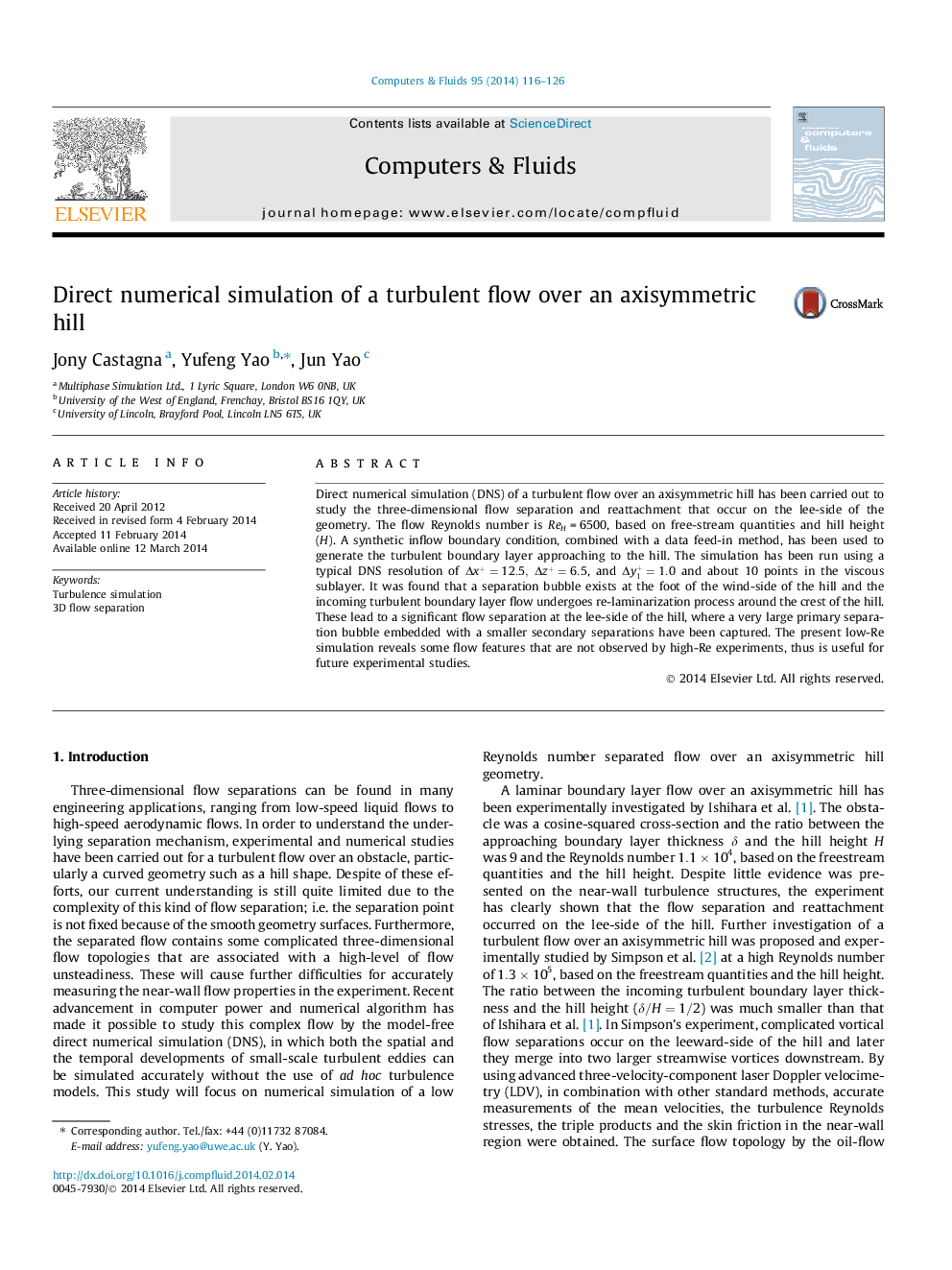| Article ID | Journal | Published Year | Pages | File Type |
|---|---|---|---|---|
| 768403 | Computers & Fluids | 2014 | 11 Pages |
•We have further developed a fully 3-D high-order DNS code for a low-Re turbulent flow simulation.•We have advanced a previous LES study of same flow problem, but applying DNS approach.•We have carried out detailed study of 3d separated turbulent flow over an axisymmetric hill.•Obtained DNS (statistics) database would be useful for turbulence model development and future low-Re experiment.
Direct numerical simulation (DNS) of a turbulent flow over an axisymmetric hill has been carried out to study the three-dimensional flow separation and reattachment that occur on the lee-side of the geometry. The flow Reynolds number is ReHReH = 6500, based on free-stream quantities and hill height (H ). A synthetic inflow boundary condition, combined with a data feed-in method, has been used to generate the turbulent boundary layer approaching to the hill. The simulation has been run using a typical DNS resolution of Δx+=12.5,Δz+=6.5, and Δy1+=1.0 and about 10 points in the viscous sublayer. It was found that a separation bubble exists at the foot of the wind-side of the hill and the incoming turbulent boundary layer flow undergoes re-laminarization process around the crest of the hill. These lead to a significant flow separation at the lee-side of the hill, where a very large primary separation bubble embedded with a smaller secondary separations have been captured. The present low-Re simulation reveals some flow features that are not observed by high-Re experiments, thus is useful for future experimental studies.
